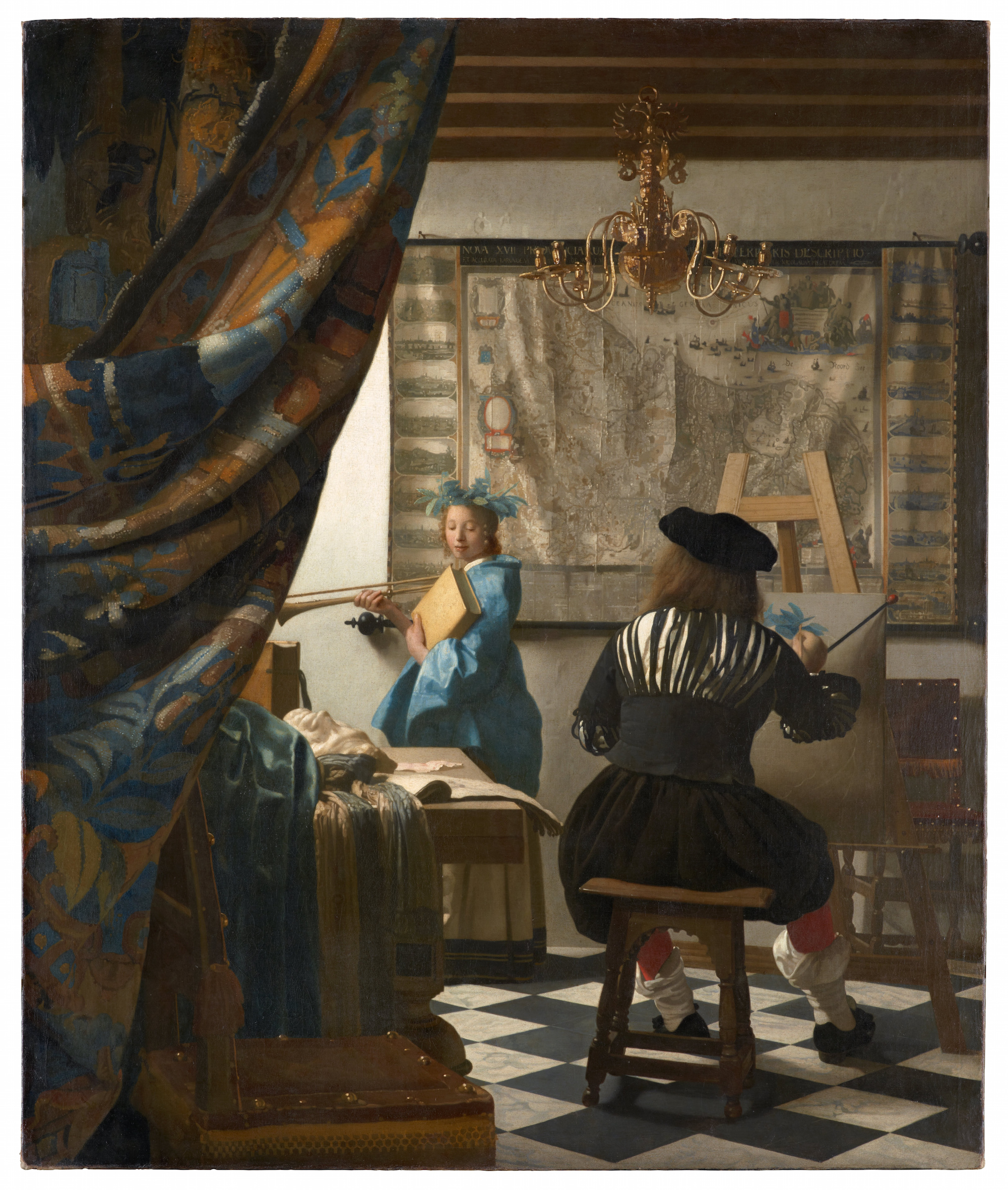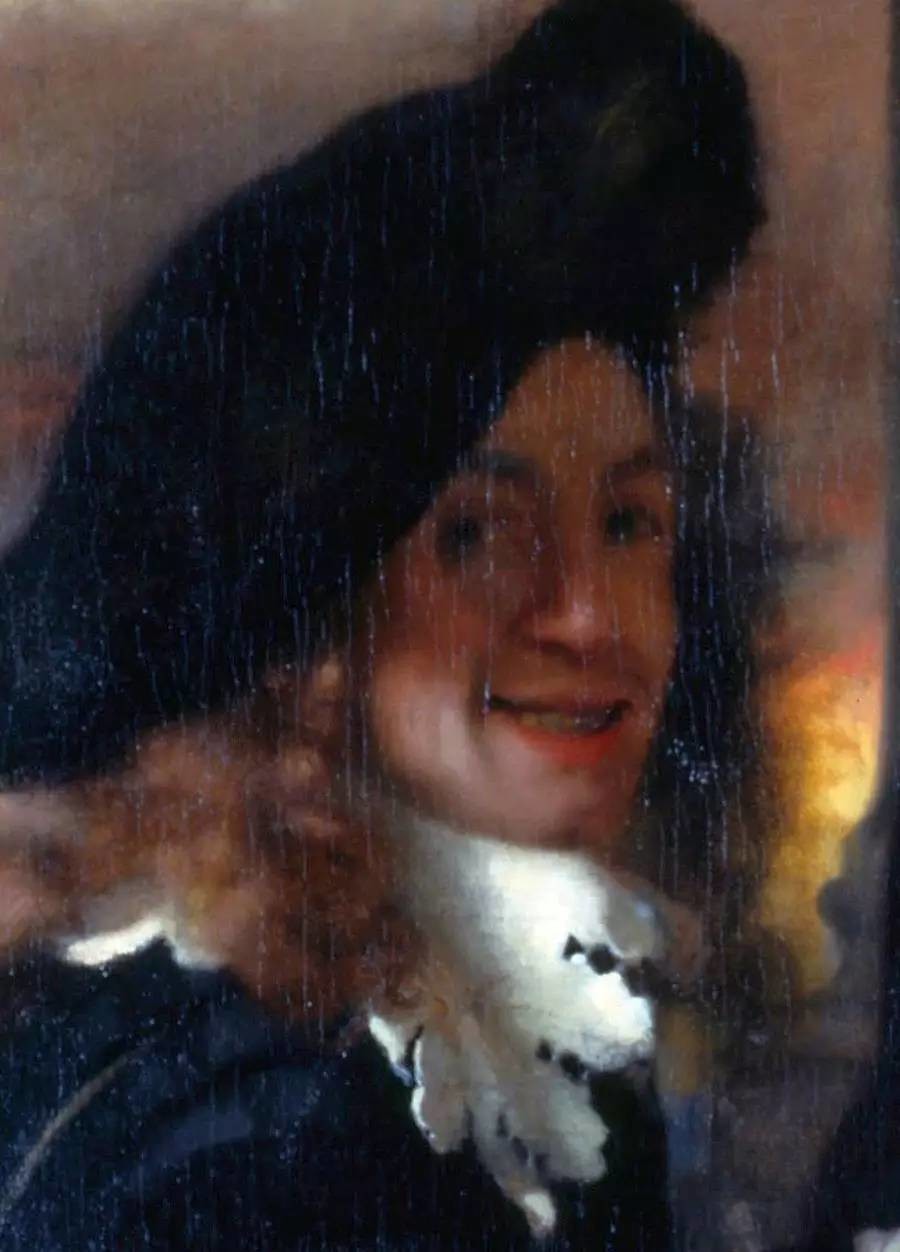



The Art of Painting
oil on canvas • 130 cm × 110 cm
"The Art of Painting", also known as "The Allegory of Painting", or "Painter in his Studio", is a 17th-century oil on canvas painting by Dutch painter Johannes Vermeer. Many art historians believe that it is an allegory of painting, hence the alternative title of the painting. After Vermeer's "Christ in the House of Martha and Mary" it is the largest work by the master. Its composition and iconography also make it the most complex Vermeer work of all.
Experts attribute symbols to various aspects of the painting. The subject is supposed to Fama, Pictura or Clio, the Muse of History, evidenced by her wearing a laurel wreath, holding a trumpet, possibly carrying a book by Herodotus or Thucydides, which matches the description in Cesare Ripa's 16th century book on emblems and personifications titled Iconologia. However according to Ripa History should look back and not down as in this painting. Following Vermeer's contemporary Gerard de Lairesse, interested in French Classicism and Ripa, there is another explanation; he mentions history and poetry as the main resources of a painter. The female in a blue cloth and with a trumpet and the laurel could also be representing poetry.
The double headed eagle, symbol of the Habsburg Holy Roman Empire, which possibly adorns the central golden chandelier, may represent the former rulers of the Low countries. The large map on the back wall has a prominent crease that divides the Seventeen Provinces between the north and south. (West is at the top of the map.) The crease symbolizes the division between the Dutch Republic to the north and southern provinces under Habsburg rule. The map shows the earlier political division between the Union of Utrecht to the north, and the loyal provinces to the south.
 Johannes Vermeer
Johannes Vermeer